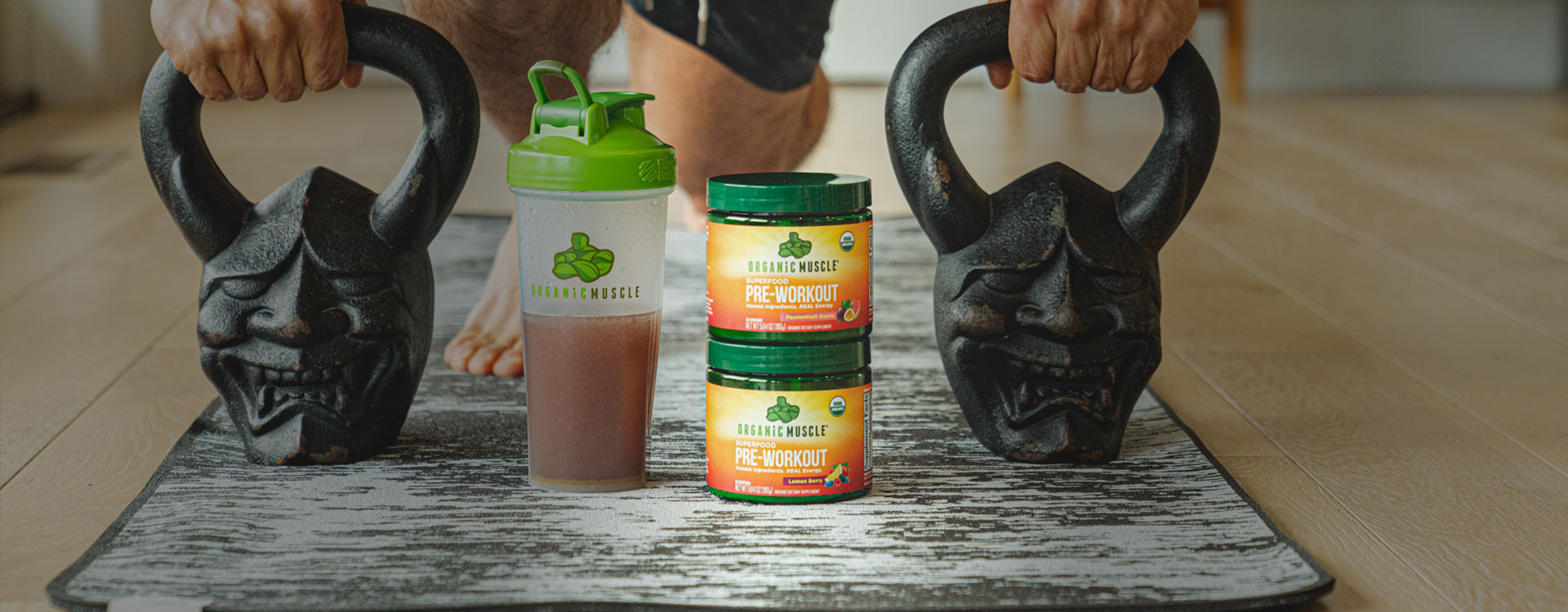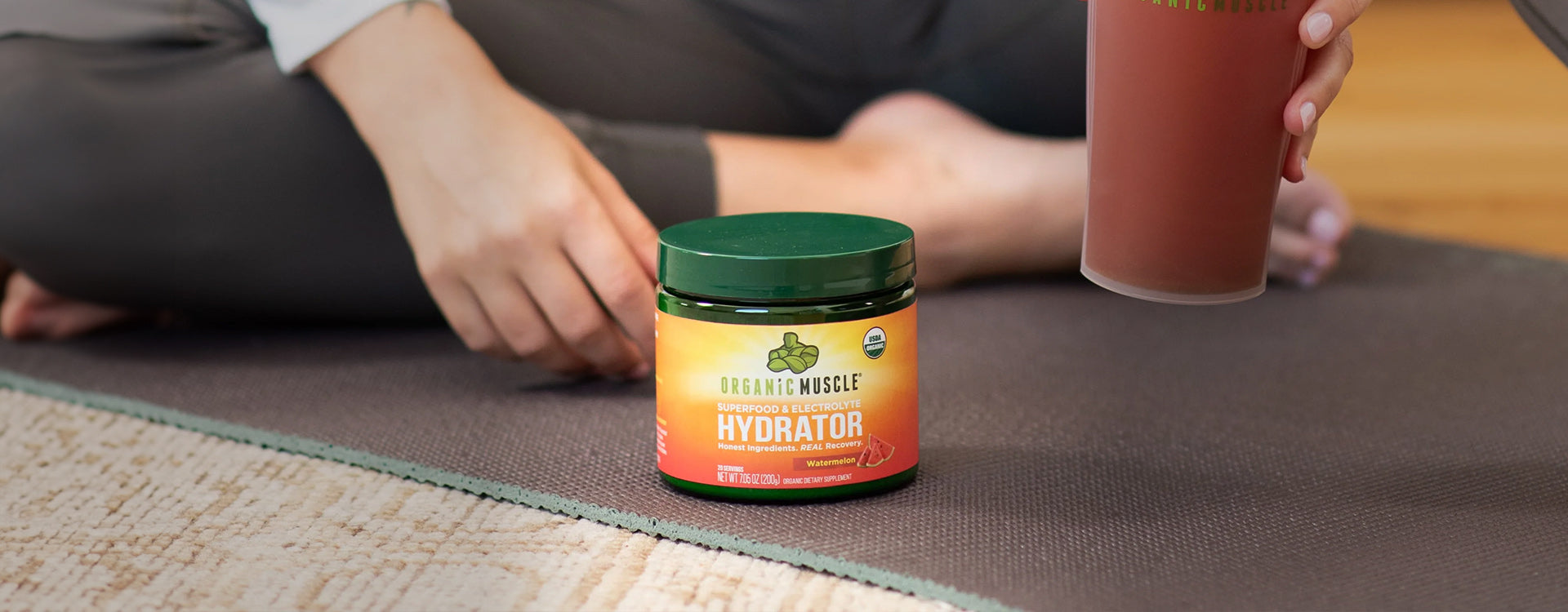Key Takeaways:
- Versatile Workout Options: Resistance bands are adaptable for various exercises, allowing users to target specific muscle groups or engage in full-body workouts.
- Safe and Effective Training: Resistance band exercises' low-impact nature reduces the risk of injury, making them suitable for beginners and those recovering from injuries.
- Portable and Cost-Effective: Resistance bands are lightweight, easy to carry, and affordable, providing an effective workout solution without bulky equipment or gym memberships.
Resistance bands have emerged as a popular and effective tool for enhancing strength, flexibility, and overall fitness. Their versatility, portability, and affordability make them suitable for individuals of all ages and fitness levels. This comprehensive guide will explore the various benefits of resistance band workouts, provide a selection of effective exercises, and offer tips for incorporating them into your fitness routine.
Whether you're a seasoned athlete or just starting your fitness journey, resistance bands can help you achieve your goals. These versatile tools offer many benefits, from building muscle to improving cardiovascular health. Discover how to harness the power of resistance bands to transform your body and enhance your overall well-being.
What Are Resistance Band Workouts?
Resistance band workouts involve using elastic bands to provide resistance during exercises, making them an effective tool for strength training, flexibility, and rehabilitation. These bands come in various thicknesses and lengths, allowing users to choose the level of resistance that suits their fitness level. Resistance bands can target specific muscle groups or perform full-body workouts, making them versatile and accessible for individuals at all fitness levels, from beginners to advanced athletes.
One of the primary advantages of resistance band workouts is their ability to engage multiple muscle groups simultaneously while promoting functional movements. They can be incorporated into various exercise routines, such as strength training, yoga, and pilates, enhancing stability and control. Additionally, resistance bands are lightweight and portable, making them an excellent option for home workouts or those traveling frequently. This adaptability makes resistance band training popular for anyone looking to improve strength, flexibility, and overall fitness.
Benefits Of Using Resistance Bands For Sculpting And Toning Your Muscles
Here are some of the key benefits of using resistance bands for sculpting and toning your muscles:
Versatility
Resistance bands can perform various exercises, targeting different muscle groups. Resistance bands can customize workouts to your specific fitness goals, whether you want to tone your arms, legs, glutes, or core.
Adaptability for Every Fitness Level
Whether you're a beginner or an advanced athlete, resistance bands come in various resistance levels to match your fitness level. This adaptability not only makes resistance band workouts accessible to everyone but also allows you to progressively increase the intensity of your workouts as you become stronger.
Enhanced Muscle Engagement
Compared to traditional free weights, resistance bands provide constant tension on the muscles, leading to increased muscle engagement throughout the entire range of motion. This constant tension is crucial for effectively sculpting and toning muscles, as it encourages the activation of more muscle fibers.
Convenience and Portability
Resistance bands are lightweight and easily portable, making them ideal for those with busy lifestyles or for anyone who travels frequently. With resistance bands, you can perform effective workouts anywhere, anytime, without needing heavy equipment or a visit to the gym.
Cost-Effective
In contrast to expensive gym memberships and bulky fitness equipment, resistance bands offer an affordable way to achieve a comprehensive, full-body workout. Their cost-effectiveness and effectiveness in building muscle make them an invaluable asset for anyone looking to enhance their physical fitness without breaking the bank.
Reduced Risk of Injury
Due to the low-impact nature of resistance band exercises, there is a decreased risk of injury compared to lifting heavy weights. This makes resistance bands particularly beneficial for recovering from injuries or new to strength training, allowing them to tone and sculpt their muscles safely.
Beginner's Guide: Starting Your Resistance Band Journey
This section is a straightforward guide for newcomers, ensuring your path to physical betterment is effective and safe.
Understanding Resistance Bands
Resistance bands are versatile, portable fitness tools in various sizes and resistance levels. They are made from sturdy, elastic materials designed to add an adjustable level of resistance to your workouts, which is beneficial for strength training, muscle toning, and improving flexibility.
Choosing the Right Band
Selecting the appropriate band is crucial. Beginners should start with bands that offer lighter resistance and gradually work up to heavier bands as their strength improves. Pay attention to the band's color, which often indicates its tension level—lighter colors indicate lower resistance, and darker shades indicate higher resistance.
Safety First
As with any new exercise regimen, ensuring your safety is paramount. Here are a few tips:
- Before starting your workout, check your resistance band for signs of wear or damage.
- Secure the band under your foot or another stable surface to prevent it from slipping.
- Start with less resistance to master the form of each exercise before advancing.
Basic Exercises to Get You Started
- Banded Squats: Place the band under both feet and hold the ends with your hands at shoulder level. Perform squats as usual, the band adding resistance as you rise.
- Chest Press: Anchor the band behind you at chest level and push the ends forward, mimicking a chest press motion. This can be done standing or on a bench.
- Pull-Aparts: Hold the band with both hands and pull it apart, keeping your arms straight. This exercise targets your rear deltoids and upper back.
- Bicep Curls: Stand on the band with your feet shoulder-width apart, holding the ends with your palms facing up. Curl your hands toward your shoulders against the band's resistance.
Incorporating Resistance Band Workouts
Integrating these exercises into your routine can significantly improve your strength and muscle tone. Aim for 2-3 sets of 8-12 reps per exercise for beginners, focusing on form and proper muscle engagement. As you progress, you can increase the resistance, add new exercises, and combine bands for a more challenging workout.
Intermediate Level: Taking Your Training To The Next Step
As you progress in your fitness journey, it's crucial to challenge your muscles through increased resistance and complexity. Here are some top resistance band exercises designed to take your training to the next level, promoting growth, endurance, and muscular definition.
Standing Resistance Band Bicep Curls
Stand with your feet shoulder-width apart, with the center of the band under your feet. Hold the bands with your palms facing up and elbows close to your torso. Curl your hands toward your shoulders in a controlled movement, keeping your elbows stationary. Slowly lower your hands back to the starting position. Aim for 3 sets of 10-12 repetitions for optimal sculpting.
Resistance Band Tricep Kickbacks
Place the band under one foot and lean forward slightly, holding the band with the same side hand. Keep your elbow close to your body and at a 90-degree angle. Extend your arm backward until it is straight, focusing on contracting your tricep. Return to the starting position with control. Perform 3 sets of 10-12 repetitions on each arm to achieve toned arms.
Resistance Band Squats
Stand on the resistance band with your feet shoulder-width apart, holding the other end with both hands at shoulder level. Lower your body into a squat while keeping your chest up and back straight.
Press through your heels to return to the starting position. This exercise targets your lower body and core, contributing to a well-rounded fitness routine. Complete 3 sets of 10-15 repetitions for maximum effectiveness.
Resistance Band Lateral Walk
Place a resistance band around your legs, just above your knees or ankles for more intensity. Maintain a quarter squat position with your hands on your hips or in front of you for balance. Step to the side slowly, controlled, keeping the band taut. Take 10 steps to one side, then switch and walk the other way. This exercise strengthens the hip abductors and glutes, which are crucial for stability and power. Perform 3 sets in each direction to enhance muscular endurance and tone.
Advanced Level: Pushing Your Limits
Once you've mastered the basics and intermediate levels of resistance band workouts, you can further push your limits and sculpt your body. Advanced resistance band workouts are designed to challenge your muscles through increased tension, more complex movements, and incorporating additional fitness tools. Remember, progression is key to avoiding plateaus and ensuring continuous strength, tone, and endurance improvement. Here are some advanced moves to take your resistance band workouts to the next level:
Resistance Band Deadlifts
This variation intensifies the traditional deadlift. Stand on the band with both feet shoulder-width apart. Hold the band with both hands and stand upright, creating tension in the band. Keep your back straight, push your hips back, and lower your torso until you feel a stretch in your hamstrings. Drive through your heels to return to the starting position. This exercise targets the hamstrings, glutes, and lower back.
Banded Squat Press
Combine a squat with an overhead press to simultaneously work your lower body and shoulders. Step on the band with your feet shoulder-width apart and hold the handles at shoulder height. Perform a squat, keeping your chest up. As you return to standing, press the bands overhead. Ensure the motion is fluid and controlled to effectively engage the core, shoulders, and legs.
Single-Arm Band Chest Press
Anchor the band to a stable object at chest height. Facing away from the anchor, hold the band with one hand and step forward into a staggered stance for balance. With your arm slightly bent and palm facing down, press the band forward until your arm is fully extended. Return to the starting position slowly. This unilateral exercise helps improve muscle imbalances and increases core activation.
Resistance Band Pull-Aparts
An excellent exercise for the rear deltoids, trapezius, and rhomboids, which are often neglected. Hold the band with both hands in front of you at shoulder height, palms facing down. Keep your arms straight, pull the band apart, and squeeze your shoulder blades together. Slowly return to the starting position. This move not only strengthens the back but also helps improve posture.
Plyometric Banded Jumps
Plyometric banded jumps are ideal for those looking to add a cardiovascular challenge while targeting the legs and glutes. Place the band just above your knees and stand in a squat position. Explosively jump up, extending through your hips, knees, and ankles. Land softly and immediately lower into a squat to prepare for the next jump. This high-intensity exercise boosts power and endurance.
Choosing The Right Resistance Bands For Your Fitness Goals
Resistance bands come in various types, each suited for different fitness levels, goals, and exercises. Here, we guide you through choosing the right resistance bands to complement your workouts and help you achieve sculpted, toned muscles.
Types of Resistance Bands
- Loop Bands: These closed-loop bands are versatile and ideal for lower-body exercises. They are perfect for targeting your legs and glutes, providing a range of resistance levels to challenge your muscles as they grow stronger.
- Tube Bands with Handles: These bands have handles at each end, offering a practical solution for upper-body workouts like chest presses, rows, and shoulder exercises. The handles provide a secure grip, making them a favorite for strength training and muscle toning.
- Therapy Bands: Flat and thinner than loop bands, therapy bands are designed for rehabilitation and stretching. They offer a gentler resistance, making them ideal for beginners or those recovering from injuries.
- Power Bands: Thick and sturdy, these loop bands are designed for heavy-duty use. They are excellent for dynamic workouts that require more resistance, such as assisted pull-ups or heavy lifting assistance.
Factors to Consider
- Resistance Level: Bands are often color-coded by resistance level, ranging from light to heavy. Beginners should start with lighter bands and gradually progress to heavier ones as their strength increases.
- Material: Quality matters regarding endurance and safety. Look for bands made from durable, high-quality materials such as natural latex, which offer strength and flexibility.
- Purpose of Exercise: Your fitness goals will determine the type of band you need. If you focus on general fitness and toning, loop and tube bands with handles may be your go-to. For specific rehabilitation needs, therapy bands could be more appropriate.
- Length: The band's length should accommodate your height and the range of motion required by your exercises. Longer bands are better for taller individuals or exercises that involve larger movements.
Tips For Using Resistance Bands Safely And Effectively
Resistance band workouts are incredibly effective for sculpting and toning your muscles. However, like any fitness regimen, ensuring safety and effectiveness is key to achieving your health and wellness goals without injury. Here are some foundational tips to keep in mind when incorporating resistance band workouts into your routine:
Choose the Right Band
Not all resistance bands are created equal. It is crucial to select a band that suits your fitness level and the specific exercise you plan to perform. Bands come in various resistance levels, usually indicated by their thickness and color. Starting with a band with the right resistance level will help you perform exercises correctly and safely.
Warm-Up Properly
Before diving into any resistance band workout, take the time to warm up your muscles. A good warm-up increases your heart rate, loosens up your muscles and joints, and prepares your body for physical activity. This can significantly reduce your risk of injury.
Maintain Proper Form
Maintaining proper form is one of the most important aspects of any exercise, including those performed with resistance bands. Incorrect form can lead to strain and injuries. If you’re new to resistance band workouts or trying a new exercise, consider watching instructional videos or consulting with a fitness professional to ensure you’re performing the movement correctly.
Control Your Movements
Resistance band exercises should be performed with controlled movements. Avoid snapping or releasing the bands quickly. Slow, controlled movements help engage your muscles more effectively and reduce the risk of snapping the band, which could result in injury.
Regularly Inspect Your Bands
Before each use, inspect your resistance bands for any signs of wear, tear, or damage. Over time, bands can become stretched out, frayed, or even develop small tears, compromising their integrity and your safety during a workout. Replace any bands showing damage to ensure your workouts remain safe.
Listen to Your Body
While resistance band workouts can be adjusted to various fitness levels, listening to your body and avoiding overexertion is essential. If you experience pain (beyond normal muscle fatigue) or discomfort, take a break or adjust the resistance level or type of band you’re using.
Final Thoughts
Resistance band workouts are versatile and effective for sculpting and toning your muscles. They offer the flexibility to customize your routine, ensuring you target every muscle group while accommodating your fitness level and goals. The simplicity and portability of resistance bands make them an excellent tool for both home workouts and sessions on the go, ensuring your fitness journey remains uninterrupted.
Organic Muscle understands the importance of a holistic approach to health and fitness. As resistance bands enhance physical strength and endurance without heavy machinery or expensive equipment, our supplements are designed to support your body's needs with certified organic, non-GMO, vegan, gluten-free, keto-friendly, dairy-free, and chemical-free ingredients. True strength comes from combining physical exercise and nourishing your body with effective supplements.
Embrace resistance band workouts as a cornerstone of your fitness regimen to see a transformation in your strength, flexibility, and overall physique. Let Organic Muscle accompany you on this journey, providing the clean, ethical nutrition your body deserves. Remember, investing in your fitness is investing in your holistic wellness.
Read also:
- 10 Best Arm Workouts To Build Lean, Defined Muscles
- 10 Best Leg Workouts For Runners To Boost Endurance
- Best Glute Workouts For A Stronger, Rounder Booty
Frequently Asked Questions About Top Resistance Band Workouts For Sculpted, Toned Muscles
What workouts can I do with resistance bands for my legs?
Resistance bands are excellent for leg workouts, offering targeted quadriceps, hamstrings, and calve exercises. Squats, lunges, and standing leg extensions are particularly effective when incorporating resistance bands. Place the band under your feet and hold the ends with your hands to execute a squat, then squat down as usual. For lunges, step on one end of the band and hold the other with your hands, then perform lunges. These movements enhance muscle endurance and power in the legs.
How can I target my glutes with resistance bands?
Resistance band exercises such as glute bridges, donkey kicks, and lateral band walks can effectively target the glutes for a stronger and toned backside. To perform a glute bridge, lie on your back with the band placed around your thighs, just above your knees, and lift your hips upwards. Donkey kicks require placing the band around your feet and kicking one leg back at a time. These exercises isolate and activate the glute muscles, improving shape and strength.
Can resistance bands improve core strength?
Yes. Resistance bands can significantly enhance core strength through exercises like band twists, woodchoppers, and resisted bird dogs. These exercises engage multiple core muscles, including the abdominals and lower back, providing a comprehensive core workout that improves stability, posture, and overall strength.
How do I ensure proper form when using resistance bands?
Proper form is crucial to maximizing the effectiveness of your workout and preventing injury. Always start with the correct resistance level—not too easy but manageable. Keep your movements controlled and steady, focusing on your target muscle groups. Pay attention to your posture and alignment throughout each exercise, and avoid jerky or rapid movements that could lead to strain.
Can I combine resistance bands with other exercise equipment?
Yes, resistance bands can be combined with other exercise equipment, such as free weights, stability balls, or even gym machines, to add variety and intensity to your workout. For instance, adding resistance bands to dumbbell exercises can increase tension and provide a more challenging workout. However, ensure you're familiar with each piece of equipment and can maintain proper form to maximize the benefits and minimize the risk of injury.
How can I increase the difficulty of my resistance band workouts?
Increasing the difficulty of your workouts can be achieved by using bands with higher resistance levels or by modifying your positioning to create more tension on the band. Shortening the length of the band during exercises, increasing the number of repetitions, incorporating more compound movements that engage multiple muscle groups, or reducing rest time between sets can also intensify your workouts. Experiment with different strategies to keep challenging your muscles and promoting growth.
|
Disclaimer: Organic Muscle products are not intended to treat, diagnose, mitigate, prevent, or cure disease. Organic Muscle products should not replace prescribed medications or the variety of foods important to a healthful diet. |













